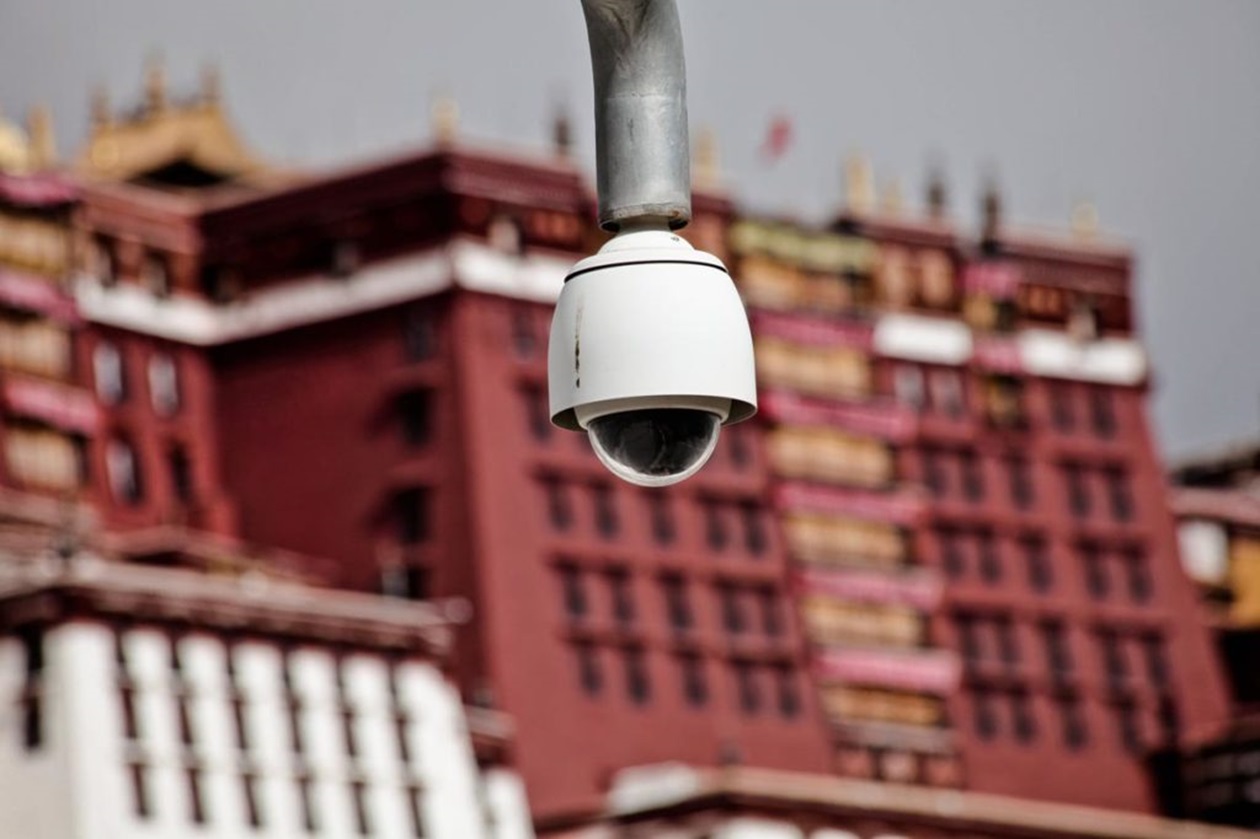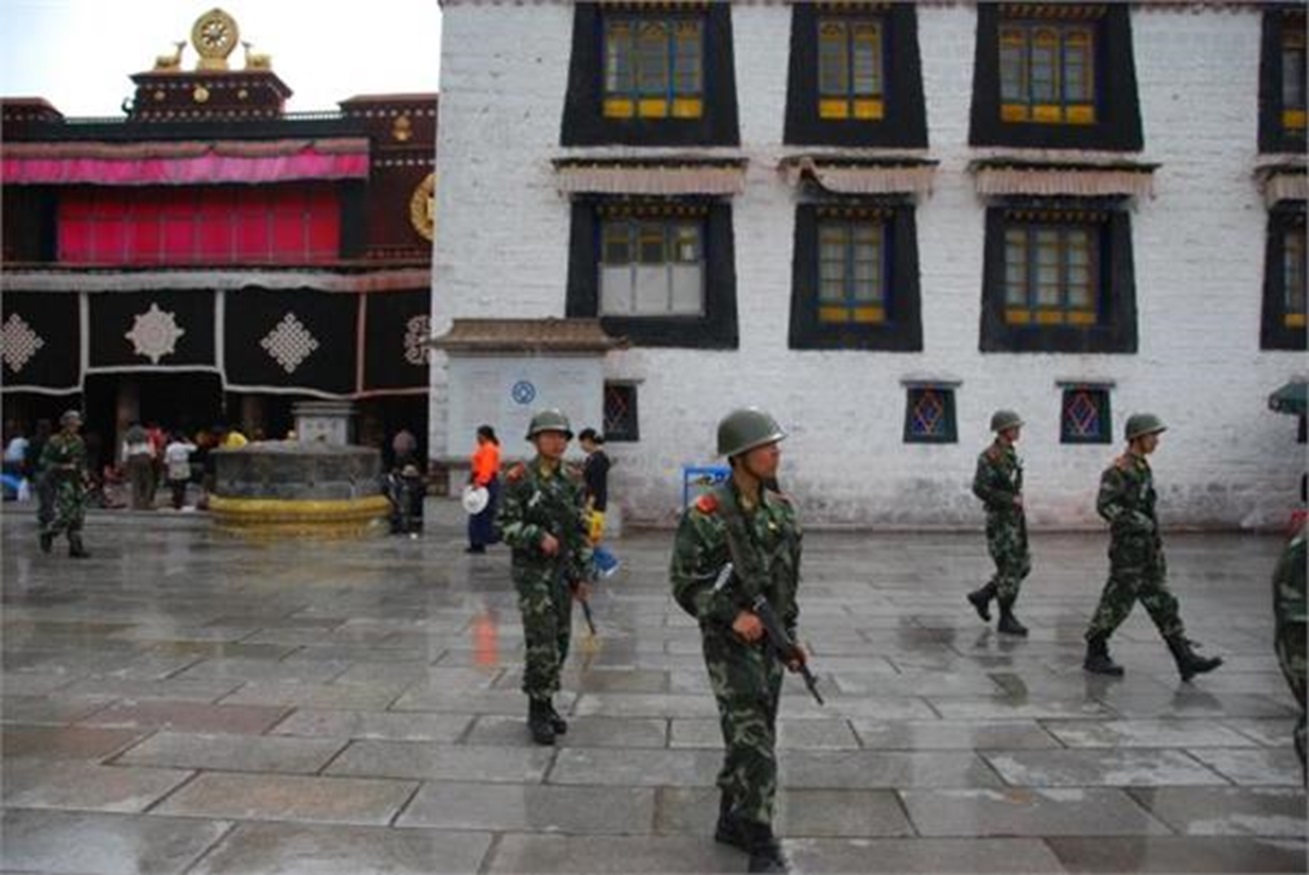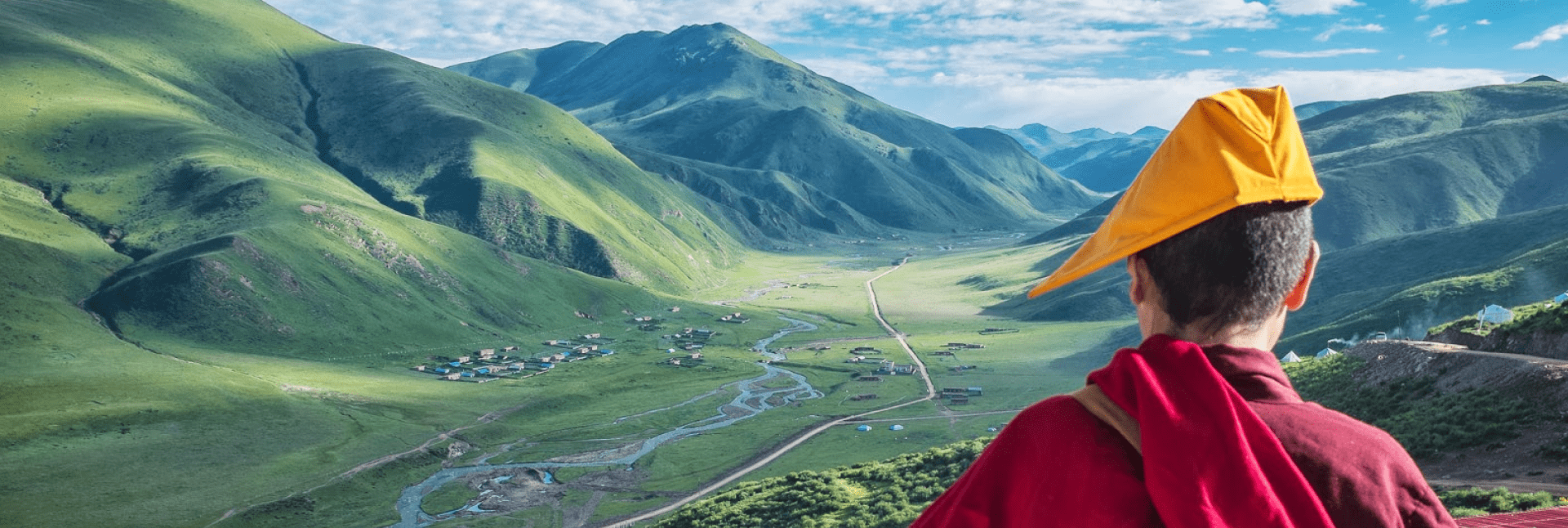This is the second part of our interview with a Tibetan refugee from Kham, eastern Tibet. He arrived in Dharamsala, northern India, earlier this year, where was interviewed by Tibet Watch’s field team.
In this section of the interview, he explains how Chinese Communist Party policies in Tibet have created an increasingly suffocating environment for those wishing to practice their religion or celebrate their culture.
He also recounts a journey to Lhasa, the capital of Tibet. Literally meaning “Land of the Gods”, Lhasa attracts Tibetan devotees from across the Tibetan plateau for pilgrimage. Travelling to Lhasa for pilgrimage, at least once, is a lifelong dream for Tibetans, especially those living in other areas of Tibet, but as he explains, this is becoming increasingly difficult for Tibetans.
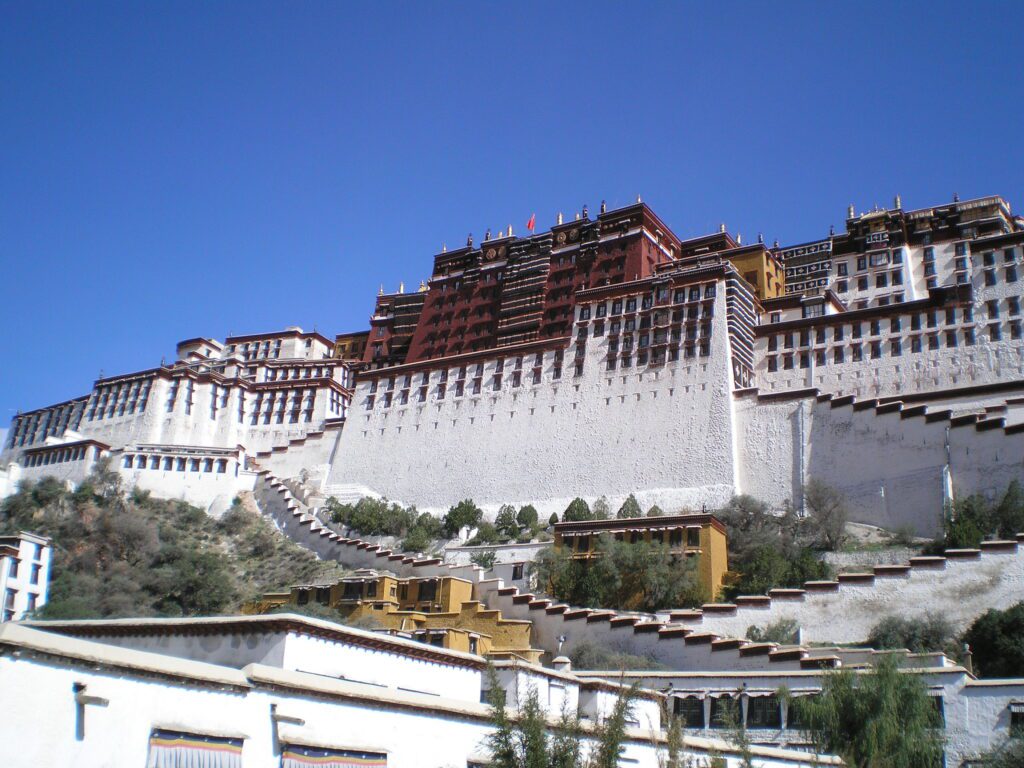
The Potala Palace in Lhasa
Restrictions on religion and culture
Since 2018 and 2019, in my village and its surrounding areas, heavy restrictions were imposed on conducting religious rituals during the cultural festivals. To conduct the yearly religious ritual ceremonies on Losar [Tibetan New Year] and other culturally significant days, and even to perform prayers for the deceased at the local monastery, we must first seek permission from the Public Security Bureau and township police. They warned and threatened us that they will make arrests and impose fines if we conduct religious ceremonies and rituals without their approval.
At the beginning of 2020, when our local monastery was preparing for religious rituals, some leaders of the monastery and some village heads were summoned by the police. They were warned that religious ceremonies and rituals are not permitted without the permission of the authorities, and that doing so would have seen them imposed with heavy penalties and even detention.
What I know is that in 2020, 2021, and 2022, for three years in a row, our village was not able to conduct our yearly religious rituals.They came up with various pretexts to forbid religious rituals by making excuses; sometimes by saying gathering of large crowds are not allowed, other times citing stability maintenance, precautionary pandemic measures, and laws that forbid underaged Tibetans from attending religious events.
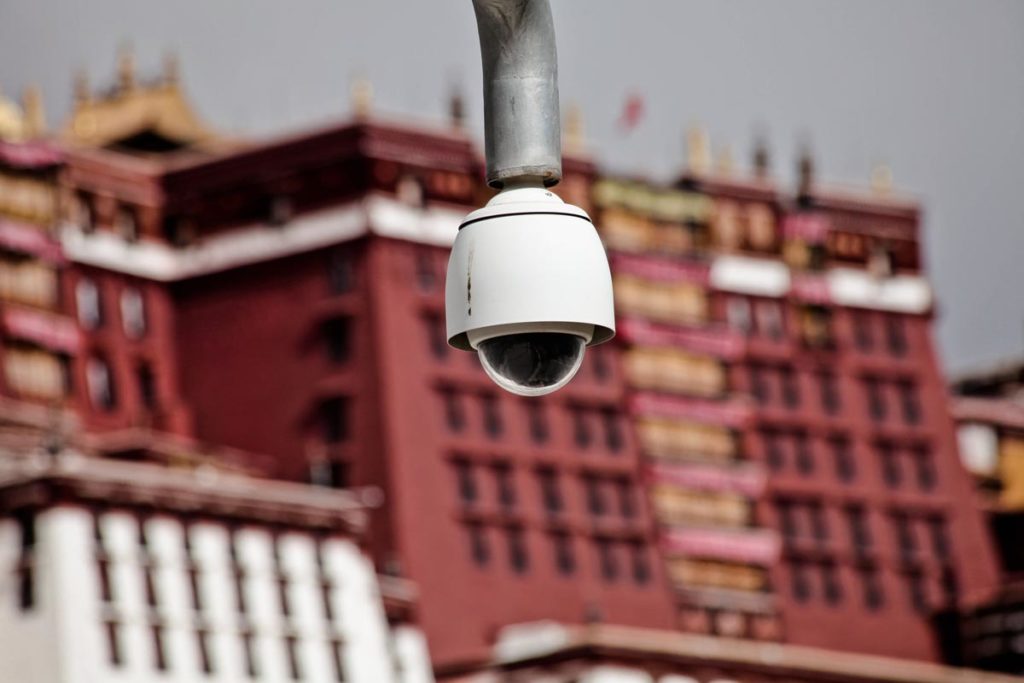
“There are no corners and streets in Lhasa without surveillance cameras”
Regulations and surveillance in Lhasa
In 2021, I took my mother for pilgrimage to Lhasa. We were not able to do it properly and had to return. Tibetan pilgrims from outside the Tibet Autonomous Region (TAR) not only need an ID card and temporary residence permit but also a guarantor. They also have to be permanent residents of Lhasa. Without these cards and guarantors, visiting pilgrims are not allowed to visit the Potala Palace and other important cultural places. They are not even allowed to stay in a guest house or rent a room. We had both the ID and temporary residence card, but we didn’t find a person who could be our guarantor because we have no relatives in Lhasa. So we only managed to visit Potala and Chakpori, and returned after two days.
Fortunately, we met a guy from our village, and stayed at his place for a few days. But he could not be our guarantor since he has been staying in Lhasa for the last few years, which was not long enough to be guarantor. So, it was really very hard to visit and do the pilgrimage in Lhasa. I don’t know why they are making Lhasa so difficult to visit for the pilgrims. But the Chinese tourists are free to tour wherever they want to go and stay in Lhasa and other places in Tibet.
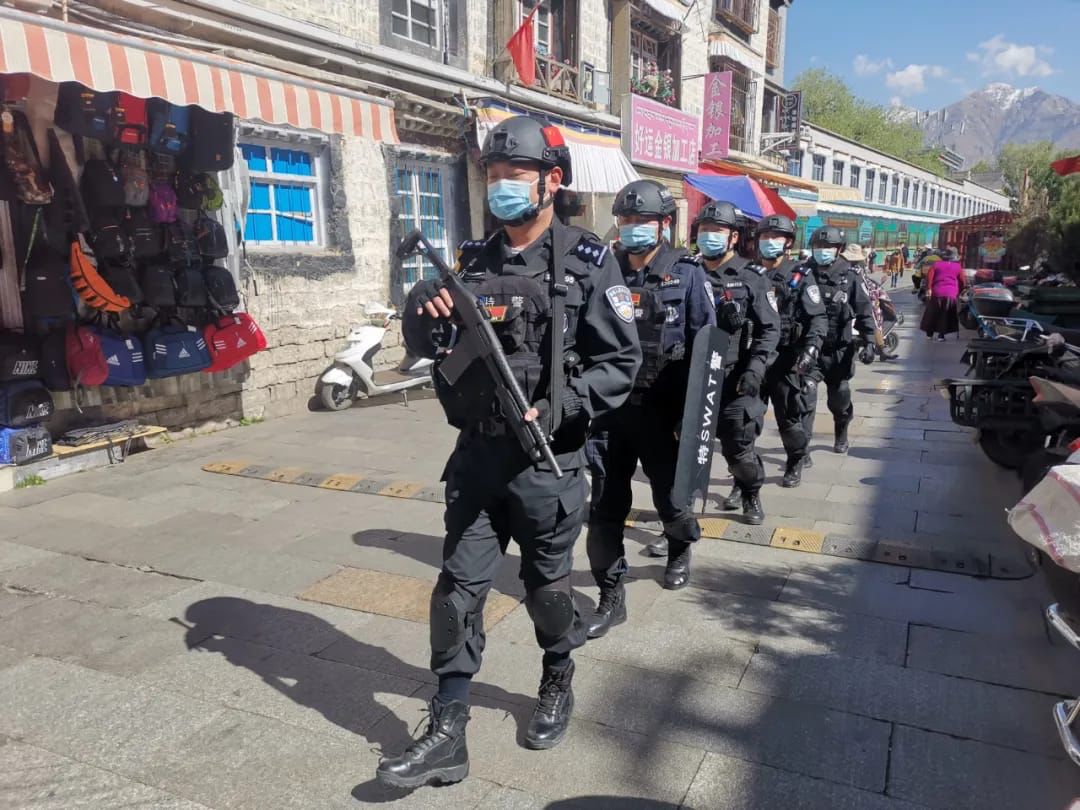
Armed police marching through a market place in Lhasa, 2022
There are police checkpoints at every street corner and several police personnel at every few steps in Lhasa. They are making sure that every individual is being checked and scrutinised- even those who are going for circumambulation. At the checkpoint, they thoroughly check every individual: their ID cards, residence card, bags, and even their mobile. If anything suspicious is found, they are taken to a detention centre for interrogation.
There are no corners and streets in Lhasa without surveillance cameras. This is the same as in our village. There are too many surveillance cameras to monitor Tibetans’ every movement and step.
Information supplied by Tibet Watch


